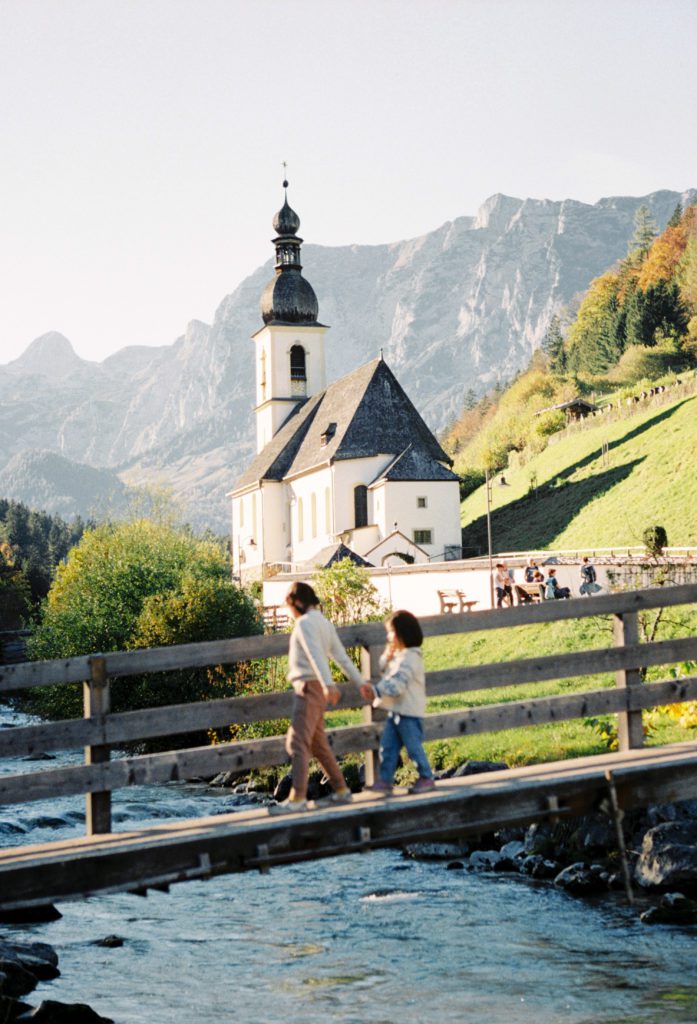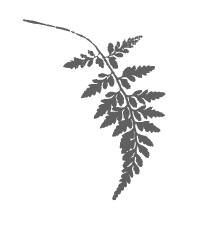
Bavaria has to be the destination I’ve heard the most about prior to visiting Germany. As usual, we had waited too long for this trip, even though in the last four months we were accustomed to having trips almost as frequent as grocery shopping. Chasing foliage is always our favorite thing to do in Autumn no matter whether we are in the Rocky Mountains, the US east coast or Europe. Upon Jane’s fall break our wish to visit the Alps region was quickly fulfilled. We had a dreamy trip to Southeast Germany and Austria. The area is also symbolized as Edelweiss, the small and white Alpine flower only grown in Alps.
Bavaria is a beautiful and romantic state of Germany, with the Alps to its south and idyllic towns dotting the hillsides. The diverse Bavaria offers much more than the Oktoberfest. Everything you encounter in this Germany’s southeast state is infused with pleasant air from nearby farming areas, which brings us back to the American countryside and makes exploring the region such an relaxing experience.



Neuschwanstein castle, also known as New Swan castle, is our first stop during this trip. The name of the castle derives from one of Wagner’s opera’s character, the Swan Knight. Wagner was one of the most well-known composers in Germany and was sponsored by the king Ludwig for whom the castle was built. This unfinished castle is also an inspiration to the design of Sleeping Beauty Castle in Disneyland. We did not book a guided interior tour so we just hiked to the best location to see the castle, the Marien Bridge. One of the reasons that held us from visiting this famous castle sooner was because the bridge was not always accessible to the public. We highly recommend checking their website before planning any itinerary. You can ride to the castle on an old-fashioned horse carriage. But if you like a little bit challenge, the hiking trail winding up to the hill is quite interesting. Happy Clear creek and strong extending-to-all-directions tree roots will lead you to the destination.
Make sure to take a deep breath when you set foot on the Marien bridge. The fairytale castle is right on the left side inviting people to find their own magic moment there. You will immediately understand why the castle was built in this contrasting landscape. In the valley of lakes, fall colors adorned the gorge with walking paths weaved among farmlands. The 360 views offers pure relaxation. Through the bridge, there are more trails that can take you to higher lookouts to see the castle from different angles.





On the way to the castle, you will be easily attracted by the blue Dimond-like Alpsee lake at the foot of the hill. Next to the lake is Hohenschwangau castle, also known as old swan castle. The King Ludwig envisioned to design this area like a stage. The lake gracefully connects the castles and romanticizes the area. There you can easily escape from the crowds around the castle and enjoy gentle hiking, boating and Alpine vistas.
It is not allowed to fly drones near the castles. We drove far away from the castles and made a flight carefully. It is a breathtaking view that we will enjoy forever and ever.






It takes 4 hours’ drive from New Swan castle to Berchtesgaden National Park, but is totally worth it. The rewards of long drive quickly materialized in the form of extraordinary views. On a tranquil farmland, lovely cows strolling and grazing in the meadow with jingling bells sounds from under their chins, composing a picturesque backdrop for the afternoon.


As soon as we came across Berchtesgaden, which sits at the Germany border with Austria, stunning mountain sceneries surrounded us. The park is home to splendid biodiversity and sweeping natural landscapes. Jagged cliffs, old-growth forests, glaciers, lakes, alpine flowers and valleys, all characterize this paradise of nature. Berchtesgaden has everything, from the most thrilling outdoor adventures including trails, glides, to relaxing natural escapes, to great restaurants and accommodating hotels.



One of the most popular places in Berchtesgaden is the Konigssee Lake, also known as Germany’s most beautiful and cleanest lake. Luckily, unlike other places in the national park, it doesn’t require any strenuous hiking to reach the lake. There are very convenient shuttle bus and shuttle ferry that will commute visitors from right past vertical mountain walls to the much-photographed baroque church of Sankt Bartholomä, and further on to the dock of Salet at the southern end. Along the way, the captain will take a pause and blow his trumpet. In that specific area, trumpet echoes will bounce back from the mountain walls. On summer schedule, ferries will take visitors to the last stop Salet, from which a 15 minute walk will bring you to another amazing lake called Obersee with gorgeous views of mountains reflected from the shimmering lake.
The day we went was actually the last day of the summer schedule. There were fewer tourists visiting the lake and nearby attractions. If it is summer, before hopping on the returning ferry from Salet, visitors may be able to taste fresh milk produced by local cows. The region is also famous for roasted trouts, which are of course from the lake.












In the afternoon, we headed down to Ramsau, another Forested area featuring a creekside trail and striking scenery. Kids had a lovely time walking across a bridge and back, playing leaf piles along the crystal-clear creek. This place is not as popular as other parts of the national park, but we couldn’t drive past this area without making a stop.






It only takes 30 minutes for us to drive from Berchtesgaden, Germany to our next cross-border stop, Salzburg, Austria. It is very enjoyable traveling in Europe – getting from one country to another is very convenient and smooth. Germany and Austria have a lot in common including the language, but as tourists we felt more welcomed in Austria.
Salz means salt in English, so you can safely guess Salzburg is related to salt. That tiny but indispensable material brought wealth and prosperity to this city. One of the oldest salt mines in the world, which is actually in Berchtesgaden, is only about 20 kilometers away from Salzburg. The salt provided a livelihood for local people, brought riches to the archbishops, and built this magnificent city of Salzburg we admire today. In a place called Hohensalzburg Fortress, there displays a 3D city model made by white shinning salt, which was called “white gold” in old days.
Nowadays, Salzburg is famous for its culture of music – it is the birthplace of Wolfgang Amadeus Mozart. If that is not exciting enough, the famous movie “the sound of music” was filmed in Salzburg and the real Trapp family once lived here. So before starting to explore the city, we watched the movie together in the hotel. Afterwards, not surprisingly, Jane hummed “Do Re Mi” wherever she went. Kids were excited to attach the original shooting locations to its old scenes in the movie, from Mirabell Palace and Garden to Leopoldskron palace. There is also an official 4-hour long sound-of-music tour that will guide you through the city according to the movie.
Sound of Music is one of the very few English movies I watched growing up. At first, I watched it just to practice my English. The mesmerizing music and spirit-lifting virtue deeply impressed me. So we choose Mirabell Palace, where the music lesson scene is shot, as our first stop in Salzburg. The garden is not as crowded as we had thought. Stepping on Maria’s stomping grounds brought back so many memories about this movie. What made it more fun is that this time I was with my own kids who all enjoy this old but classic musical movie.







We also visited Mozart’s house. There are two locations in the city, one where Mozart was born and the other belonging to adult Mozart himself. We visited the later one, which is very close to Mirabell Palace.
Over the Mozart bridge to the other side of Salzach River, we made our way to the center of medieval Salzburg. You won’t miss horse carriages, musicians playing on the street, roasted chestnut booth and many more old fashions. In the square, there installed a peculiar art object – a huge golden ball with a full-length figure of a man standing on it. This unusual monument is dedicated to Paul Fürst, the creator of the famous Mozartkugel sweets that became the symbol of Salzburg and Austria. It is just like the edelweiss as the most common symbol on Austria and Bavarian’s building and home decoration.





Through the square is the famous Hohensalzburg Fortress, which leads us to a special kind of time travel back to the middle Ages: the perfectly seated castle enlightens young and old visitors with numerous playfully-designed stations and recreated scenes from the life in the old days. With its panoramic views and good condition, the fortified tower is so unique for Salzburg.




Upon sunset, we went to another cable car ride on the other side of Salzburg. That is the longest cable car ride we’ve ever been in. All the Alps mountains look magnificent from the top of the hiking point. As we learned some other alpine flowers along the hiking trail, our trip seemed to attain to the peak.






The next morning was mostly spent in the car driving back to Munich. To ease complaints of boredom and sibling flights in the backseat, we took a detour to Leopoldskron palace, where the backyard scenes in the Sound of Music were filmed. We didn’t initially plan to visit this Trapp Family residence because it is now converted to a private hotel. While anticipating some disappointment, we ended up being surprisingly amazed that we found the same building, same gardens gate to the lake and even a fun swing by the lake.




Like before, we didn’t plan much for this trip to Austria. But little adventures always manage to find us when we’re open to them. We hit the road without knowing the nice fall weather in Alps and ended up with thick sweaters piling up in the car; we did not recognize the flower decoration on doors, ceilings, and people’s clothes are in fact Eldeiweiss until we watched Sound of Music again in the hotel in Salzburg; Also the improvised itinerary on the last day absolutely gave our trip a happy ending. While the castles, Fall foliage, and the chestnuts we tried by the Salzach river all bring us pleasant surprise, being an explorer with an open mind is truly what taps into the Alps magic.






So, so beautiful! This was very similar to the trip Scott and I were supposed to take in 2020. Hopefully we’ll get another chance to make it happen.
The Oktoberfest just ended when we were there. Otherwise it would be the best! Fingers crossed you guys will be there soon!✌🏻